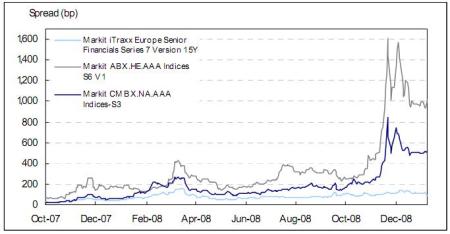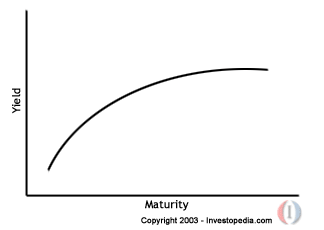Starting with the little spat between John Stewart and CNBC I started to think seriously about how the financial news stations are extremely broken. Now, I’ve mused on specific parts of this equation before. However, I’ve been writing this post, a more complete look, for a while. So, imagine my surprise when Barry Ritholtz beat me to the punch! Barry’s look, though, seems to focus more on the “low-hanging fruit” when it comes to improving CNBC. Personally, I think there is a massive overhaul needed. So, instead of taking the same approach as Barry (telling a network how to improve itself) I’ll focus on describing what my ideal financial news network would look like.
1. Make no buy/sell recommendations. Honestly, the shameless self-promoters that go on CNBC are quite often wrong. There is no accountability for recommendations–obviously, the logistical issues are both important and daunting. However, there is a much larger problem that is most observable with Jim Cramer. I have no doubt Mr. Cramer is intelligent, just as I have no doubt that his show is useless drivel–he needs to make so many recommendations just to fill his airtime that no one ever sees his performance, CNBC doesn’t track it, and all the studies that look at his recommendations need to make huge assumptions. But, the easiest explanation of why recommendations are bad comes from a post entitled Lawyers vs. Detectives. Clearly, also, there doesn’t exist the air time or continuity to track and update recommendations correctly–the logisitical issues I mentioned earlier. And, to be frank, any idiot can just dump ticker symbols onto the screen and say a few sentences about why those ticker symbols are good or bad… and be completely wrong or stupid. The point of a good finance network should be to bring reporting and analysis to light. (Further evidence: look at Barron’s experts who, as a whole, underperform passive indices. And they are tracked and asked for analysis of their picks regularly.)
2. Emphasize investiagtive journalism. Financially literate, intelligent people can add a whole lot of value when it comes to explaining and digging into economic and financial stories. Think Kate Kelly and her three part tick tock of the Bear Stearns situation as a good example. Think of the deep look into the mortgage industry that NPR did. Think of the detailed profiles of various individuals at the center of the finance world. Clearly, there is a lot of value to be added merely by going beyond the puff piece. Right now what people get 90% of the time when it comes to finance reporting pertains to what the Dow Jones did or is doing for the day. Guess what? When stocks go up, it’s because there are more buyers than sellers. When they go down, vica versa. Trying to divine more than that from the market move on a given day is as useless and surface as it often is wrong.
3. Hire experts and not personalities. I’ll tell you a secret… Maria Bartiromo adds no value if you know anything about markets and finance to start with. I’ve seen her provide an outlet for executives to provide narrative versions of their press releases several times. There is never a question I’ve heard her ask that was probing or had an answer I didn’t already know from reading the NY Times or the WSJ. She doesn’t even understand journalism very well! The entire lineup of attractive and vacuous seat-warmers add no value. Remember this little episode with Fox Business news? Now, that’s a little different because it was live, breaking news. However, a thinking person probably would have stopped before talking about how great a move it was for Apple to buy AMD, despite the fact that such a purchase would have been “WTF?!” move for Apple–the current anchors just talk to talk. I even remember a CNBC anchor pulling up a guest’s chart on a segment (the network had been hyping this segment for a few hours–theoretically the anchor had prepared for it) and asked why, if things were so dire, the chart showed such a strong rally/uptrend. Well, the chart was showing spreads for a certain class of bonds–and, as we all know, when yield goes up, price goes down! She was anchoring a segment on fixed income (and had already been chatting about the topic for a few minutes!) and still couldn’t figure out what was going on in a very simple chart… Surely there’s room for improvement!
The model, though, for financial news anchors should really be an engaged, credentialed moderator. Thomas Keene, honestly, is a great example of this. I don’t catch his show (or podcast) as often as I would like, but whenever I do it’s clear he’s intelligent, familiar with the underlying issues, and that he views his job as getting his guests to make their case as well as expose the “other side” of the argument. A network should be able to create a lineup of intellectual experts (with relationships and enough personality to be interesting) in equity markets, corporate credit/finance, economics, macroeconomics, currencies, commodities, personal finance, etc. Networks haven’t seemed to figure out that, unlike human interest stories and traditional news, having some domain expertise is vital to being able to ask the right questions and get the underlying reasoning out into the open.
4. Go beyond soundbites and short on-air segments. I think finance is much more complicated than normal news, in the same way that political news usually is more complicated: there are lots of underlying dynamics, complex rules, and large parts of the process are hidden from view and established through precedent. Unlike a plane crash, terrorist attack, or story about some zany celebrity antic, financial news that focuses on the “what” instead of the “why” is dull, uninteresting, and useless. This is why financial news, in the first place, tries to explain what’s going on. So, it should only be natural that financial news, if it needs the “why” to be useful and is more complicated than garden-variety news, needs to allocate more than a few minutes to a given issue. No one is going to understand what’s going on with commercial real estate in five minutes. CDOs can’t even be explained in ten minutes, let alone covered in the context of the credit crisis in that time.
How can a financial news network, then, ensure that there is enough depth to a story or segment? Well, time is obviously a big piece of the equation. To revisit a prior example, Thomas Keene usually has guests on for 30+ minutes. However, media and a command of visual aides and interactive media online is also important. Some of the most compelling explanations of how CDOs work and different aspects of the credit crisis are graphics. Further, finance is based on data–models, data highlighted in charts and stories, and other material should all be made available online.
5. Embrace new media. As far as I can tell, no financial news station has a strong online presence. If a strong group of credentialed experts is the backbone of the network’s on-air talent (see #3 above) then they should have deeper, more valuable insights than what they can cover on the air. These thoughts should be blogged about, tweeted, and whatever else to make them as accessible as possible–more and more the “conversation” is online and to join it one must have their thoughts online. The NY Times does a good job at this–their columnists and reporters write all sorts of blog entries ranging from deep, researched pieces to random musings and clever one-line arguments.
Further, with my idealized network, all the content from on-air segments would be put on YouTube and made available to whomever wants to link or embed it. Openness and access would be key strategies for the network. A part of this is also making the on-air personalities and others who contribute regularly interact with the public as much as possible (currently, Twitter is a great medium for this).
6. Emphasize standards–make objectivity, fairness, and accountability the network’s core values. Barry talked about this in his list:
7. Fact Check: An awful lot of things on air get stated with authority and confidence. Much of them are little more than junk or pop myths. Why is it that the more dubious a proposition is, the greater the confidence the speaker seems to muster? Consider fact checking as much of the statements that are made on air as possible, and making frequent corrections.
Now, this ties in with some of what I’ve said above. However, my point goes beyond this. Executives should not want to go one my idealized network when they need to “get out a statement”–the “narrative press release” as an interview is useless and doesn’t hold the subject of the interview accountable for their words. Similarly, when a guest comes on and makes an assertion that is incorrect it needs to be challenged at the time and corrected later–I clearly take a harder stance on this issue than Barry does. If people will be making their investment decisions based on information presented on the network and then they need to trust the network–viewers need to know the network strives to prove correct information and puts every effort into doing just that. Also, the rules of “journalistic engagement” for the network (things like policies on anonymous sourcing) should be public.
7. Make education a pillar of the network. Finance and markets, as I describe in multiples places above, are complicated and often counter-intuitive–a fair amount is “inside baseball.” Having a section of the website and some on-air time dedicated to explaining both terms and important but obscure facts and market dynamics is an important service. Simple things, like bond math, are important and static–these concepts (that subtly undergird all other topics–remember the anecdote about the misread chart above) should be revisited whenever absolutely necessary while being available at all times.
If these simple pieces were all followed, I believe there would exist a simple to follow, engaging financial network that would add a ton of value where there currently is a void. Then, maybe, the other networks would need to follow suit. I won’t hold my breath.














